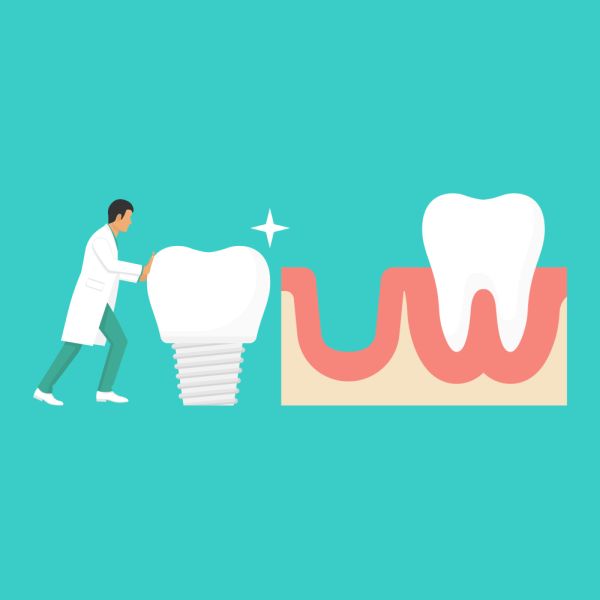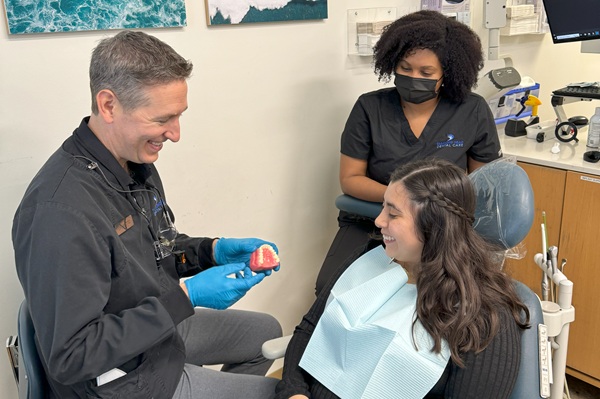Dental Implant Options to Replace Missing Teeth

Having missing teeth can present a lot of problems for someone whether it be with eating or even with smiling. Having missing teeth may not be the best look, and it also may not be the best feeling when attempting to eat.
Thanks to dentistry, there are options for people who have missing teeth. And, one of the best options to consider is that of dental implants. These dental appliances are offering people a way to get back to their natural eating habits and confident smiles. However, even within dental implants, there are options!
In this article, we will go over different dental implant options that exist. Being aware of these options can be helpful to someone who is considering implants to replace their missing teeth.
Dental implant options
Endosteal dental implants
Endosteal dental implants are the most common type as they are placed within a person’s jawbone for natural bonding to take place. They are made of titanium which is biocompatible, meaning the body shouldn’t reject it. These small screw-like implants can help provide replacement teeth to someone who is in need.
Dental crowns or implant-supported dentures are likely to be used with endosteal implants.
Subperiosteal dental implants
Sometimes people won’t have enough healthy jawbone within their mouths, and they may not want an augmentation procedure to help restore it. And, in these cases, subperiosteal dental implants are used.
These dental implants are placed under a person’s gums but still on or above the jawbone itself.
Immediate load dental implants
These types of dental implants are used when a person needs a temporary artificial tooth placed the same day that the implants are. Typical dental implants require months to heal, but immediate load dental implants allow for a temporary tooth to be placed at the same time.
Mini dental implants
Mini dental implants are tiny and primarily used for lower or partial denture placement and stabilization. They don’t require an as invasive procedure to be done because they are toothpick-sized. Mini dental implants are also referred to as small or narrow dental implants due to their small size.
Talking with a dentist
Because there are so many different kinds of dental implants, it is best to talk with a dentist. They can assess a person’s teeth and determine which is best for them, or they can provide information about each of the different choices.
All in all, dental implants can replace missing teeth but being aware of what options you do have with them can be beneficial later on down the road. However, with the number of options that do exist, only a dentist will be able to help you decide which is best for you.
If you have questions that weren’t answered in this article then reach out to our office so that we can help you further. Give us a call or stop by today!
Request an appointment here: https://www.diamondheaddentalcare.com or call Diamond Head Dental Care at (808) 450-2101 for an appointment in our Honolulu office.
Check out what others are saying about our dental services on Yelp: Dental Implants.
Recent Posts
If your wisdom teeth are coming in or are already impacted, you should talk to your dentist about removing them. Many patients have them extracted to avoid oral health problems such as infections or cysts. Gum disease is also common for people whose wisdom teeth are impacted. It is important for you to understand why…
Having a chipped tooth is no laughing matter! The effects of dental chips vary depending on the size and depth of the chip, but if left untreated, they can lead to much more serious problems down the road. The best way to deal with chipped teeth is to visit a dentist immediately to discuss treatment…
There are numerous reasons why dental professionals recommend wisdom teeth extraction, and one is to prevent teeth misalignment. Wisdom teeth are the third molars located in the lower and upper parts of the jaw, behind the other molars on both sides. The teeth generally appear years after the other permanent teeth have come up. In…
A root canal is a procedure that can save severely damaged or decayed teeth, prevent infection, and treat active infections. The process involves removing the pulp in the tooth’s pulp chamber and disinfecting the area. It often takes less than an hour from start to finish.The pulp chamber of a tooth is the central chamber…


